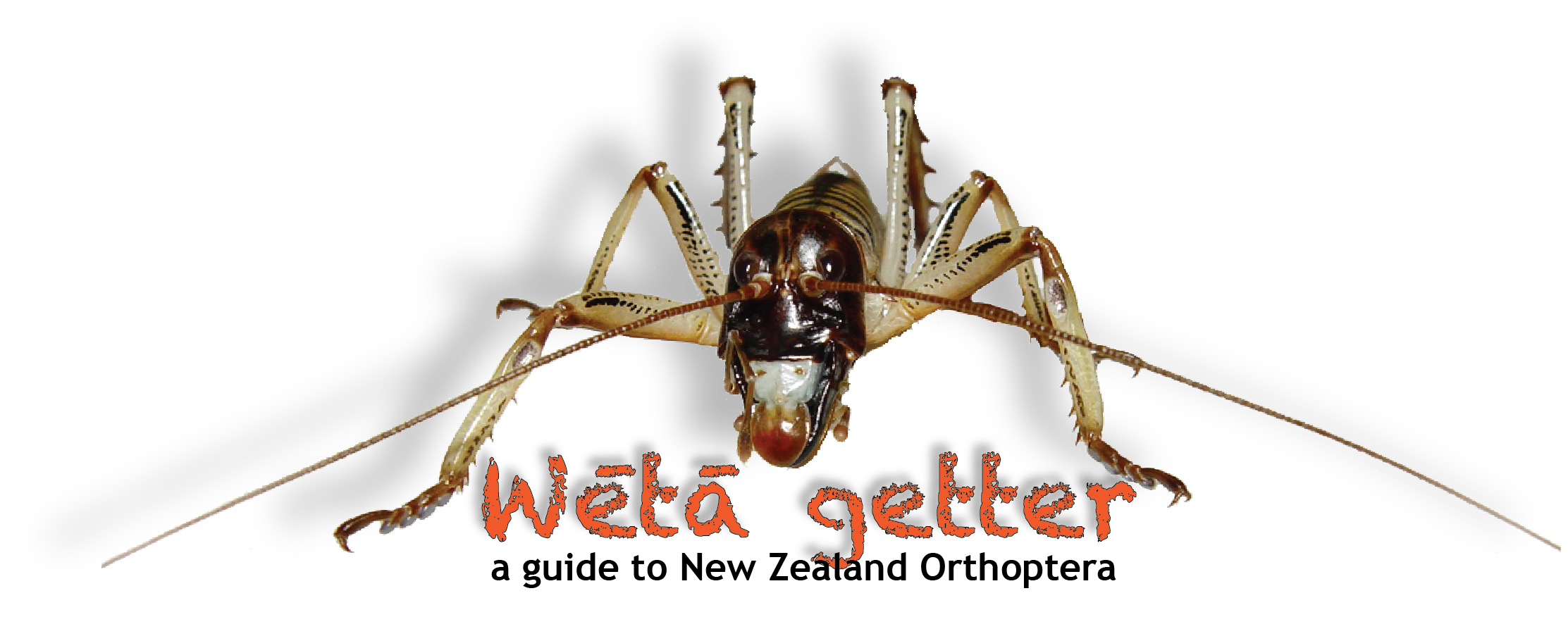 |
| Miotopus diversus male (note stout antennae)Taranaki ©Steve trewick |
Miotopus Hutton has recently been reestablished (Fitness et al. 2018). The nominate species was originally placed in Pleioplectron by Hutton, but he later moved it to the new genus Miotopus when additional specimens became available. Richards (1959) suggested it be returned to Pleioplectron but new data confirm it does not belong there. Miotopus now includes two species, with M. diversus predominant in the North Island and the newly described species M. richardsi primarily in South Island. However, the both species' ranges extend across Cook Strait and co-occur in the Nelson/Marlborough and Taranaki regions.
|
Miotopus diversus Hutton, 1898
A medium sized cave wētā found in forested areas mainly in leaf litter on the forest floor, or in the roots of trees. Dark brown with visible dark and pale bands on the fore and mid legs. |
 |
 |
Miotopus richardsae Fitness et al., 2018.
A medium sized cave wētā found in forested areas of the South Island (primarily), with a variegated colour pattern. Similar to Miotopus diversus based on apical spines with the exception of the presence on hind femora of both prolateral and retrolateral apical spines. It has been recorded from Stewart Island, Southland northwards along the west coast to the Marlborough Sounds. It is also recorded in Taranaki. Most distinctive is the the presence of three pairs of long spines on the hind tibiae. |
 |

|
References:
|
|

